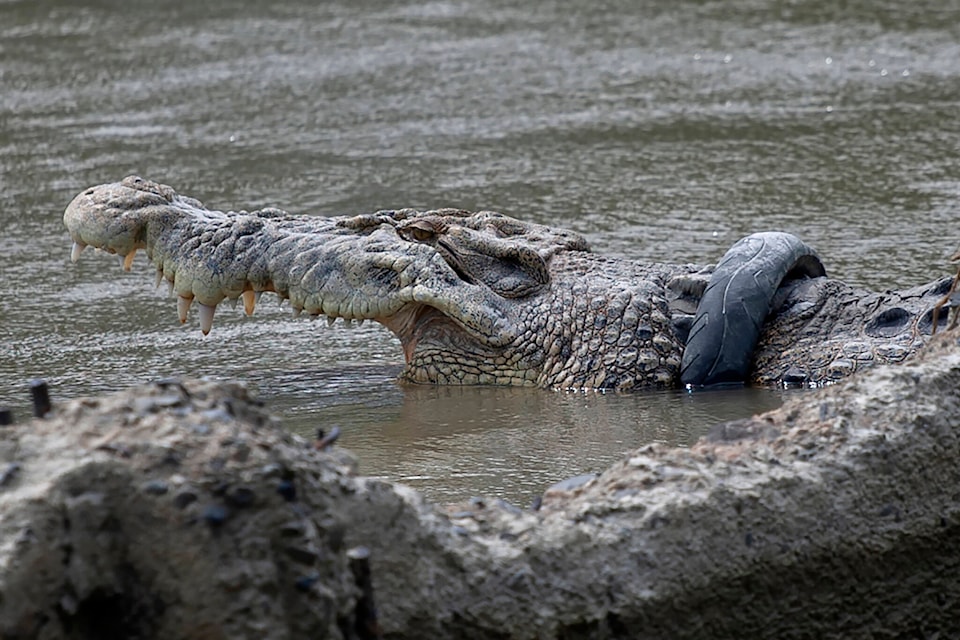Giant crocodiles once roamed northeastern British Columbia. A recently published article in Historical Biology features the first detailed trace fossil evidence ever reported of giant crocodylians. The sites are from the Peace Region of northeastern British Columbia, north of Tumbler Ridge.
The trace fossils include swim traces, made when the crocodiles were scraping the muddy bottoms of lakes and river channels with their claws. Some of these swim traces showed remarkable detail, including parallel striations that represent scale patterns on the crocodilesB��Ԫ������ַ� feet.
While the Tumbler Ridge area has become well-known for its dinosaur tracks, there is something special about crocodiles. Unlike dinosaurs, they survived, and still have not changed substantially since the Mesozoic.
In 2020, a crane company donated time and personnel to recover four large blocks containing some of the finest examples of these tracks and traces. They were transported to the Tumbler Ridge Museum, where they are securely stored and will be incorporated into future exhibits.
Ancient giants
The tracks and traces we examined are in the age range of 95B��Ԫ������ַ�97 million years from the Cretaceous Period. The tracks included ankylosaurs, ornithopods and turtles.
The size of the crocodiles can be estimated from the distance between their claw impressions. We used this distance to estimate a total body length of about nine metres, and possibly as much as 12 metres. This was corroborated by our identification of a partial track, 75 centimetres long, which allowed for a similar length estimate of close to nine metres.
A crocodile of such prodigious size would have weighed around five tonnes, and would probably have been a top predator. By comparison, the record length of crocodiles living today is about six metres.
Gigantism in crocodiles has been reported several times in the fossil record. In North America, the oldest body fossil evidence of giant crocodiles is of Deinosuchus at about 82 million years, estimated to have been between eight to 12 metres long. Deinosuchus has been recorded from the United States and Mexico, but never from Canada.
The large swim traces from north of Tumbler Ridge may represent a precursor to Deinosuchus, that lived at least 13 million years before the previously reported first appearance of giant crocodiles in North America.
Tracking environmental changes
The environment consisted of a low-lying delta-plain with shallow lakes, river channels and vegetated wetlands, situated about 100 kilometres inland from the shoreline of the Western Interior Seaway that linked the Gulf of Mexico with the Arctic Ocean.
It was possible to document multiple episodes of flooding and emergence, which determined whether and when animals walked or swam. This helped explain the variety of tracks and traces that were identified.
These findings follow our discovery of 112 million-year-old swim traces, made by much smaller crocodylians (between one and two metres long) within the Tumbler Ridge UNESCO Global Geopark. Our familiarity with the nature of the exceptionally well-preserved traces from near Tumbler Ridge led directly to the first identification of crocodile swim traces in Africa.
The co-existence of traces made by walking ankylosaurs and swimming crocodiles on a single surface was intriguing and unprecedented in the fossil record. One of the ankylosaur trackways is the smallest thus far described from the region. It comprised tracks only 10 centimetres wide, presumably made by a juvenile.
B��Ԫ������ַ� by Guy Plint, Professor, Earth Sciences, Western University and Charles Helm, Research Associate, African Centre for Coastal Palaeoscience, Nelson Mandela University. This article was originally published on The Conversation, an independent and nonprofit source of news, analysis and commentary from academic experts. Disclosure information is available on the original site.



